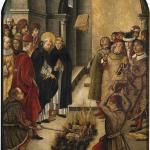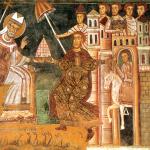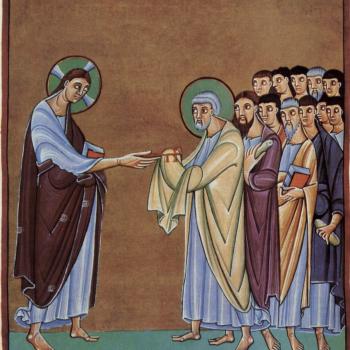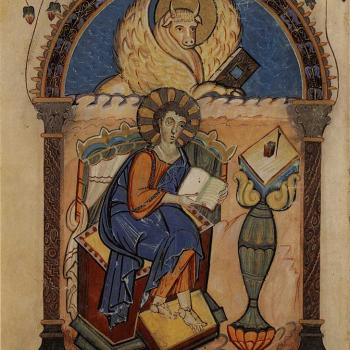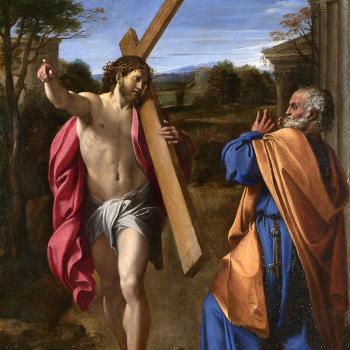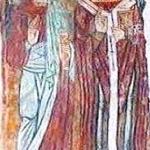
The following is meant to be a companion to the previous post “Catharism, Calvary Chapel, and Catholicism” (though long overdue! ☹). On a broader level it can serve as a resource for a few primary sources on Catharism in the Middle Ages. It includes a pair of orthodox writers as well as a citation from the Charter of Niquinta which is alleged to have come from the Cathar council at Saint-Félix-de-Caraman, ca.1167.
With respect to the ancient Catholic sources, the issue was raised in the previous post as to how much credence they ought to be given. It was noted that scholars like Mark Gregory Pegg have challenged the historiographical status quo which has been to generally accept the picture that they painted. As Malcolm Barber indicates, “even orthodox attacks on Cathar belief are important since they were particularly concerned to define it accurately in order to give wight to their refutations”.[1] Following this methodology then, the Cathari were understood by their opponents to be dualist (i.e. neo-Manichaean) heretics, who established a rival church.
Bernard Gui (d. 1331), Dominican inquisitor. From the Inquisitors Manual:
“It would take too long to describe in detail the manner in which these same Manichaean heretics preach and teach their followers, but it must be briefly considered here….
Of baptism, they assert that the water is material and corruptible and is therefore the creation of the evil power, and cannot sanctify the soul, but that the churchmen sell this water out of avarice, just as they sell earth for the burial of the dead, and oil to the sick when they anoint them, and as: they sell the confession of sins as made to the priests.” (My emphasis).
From the above we can infer that Bernard thought of his opponents as “Manichaean heretics”, and this is reinforced by their view that the waters of Baptism are not regenerative. And how could they be, from their perspective? Matter is evil according to them. Regarding Baptist sucessionism (see “Catharism, Calvary Chapel, and Catholicism”), while (some) Evangelicals may reject baptismal regeneration, they do so for a very different reason than Bernard’s Cathar opponents.
Peter of Les Vaux-de-Cernay (d. 1213), Cistercian monk:
“The ‘perfected’ heretics wore a black robe, claimed (falsely) to practice chastity, and renounced meat, eggs and cheese. They wished it to appear that they were not liars although they lied, especially about God, almost unceasingly! They also said that no one should take oaths for any reason. The term ‘believers’ was applied to those who lived a secular existence and did not try to copy the way of life of the ‘perfected’, but hoped that by following their faith they would attain salvation; they were separated in the way they lived, but united in their beliefs – or rather unbelief! Those called ‘believers’ were dedicated to usury, robbery, murder and illicit love – and to all kinds of perjury and perversity; indeed they felt they could sin in safety and without restraint, because they believed they could be saved without restitution of what they had stolen and without confession and penitence, so long as they were able to recite the Lord’s prayer and ensure a ‘laying-on of hands’ by their masters, in the final moments of their lives”.[2]
In the above we can see the distinction between the perfecti and the mere ‘believers’ among the Cathars. The latter were spiritually superior and lived more ascetic lives, including abstaining from sex, meat, eggs, etc. (cf. St. Paul’s words in 1 Timothy 4:3, often erroneously thrown in the face of Catholic disciplines by some fundamentalist opponents). By contrast, the ‘believers’ held the same faith as the ‘perfected’, but lived sinfully and evidently without restraint. Their insurance policy was the consolamentum, which the ‘perfected’ administered to them on their death beds (“a ‘laying-on of hands’ by their masters, in the final moments of their lives”).[3]
While one might be able to discern a reflection of a parallel church in theses black-robed Cathar ‘perfected’ administering the consalamentum to the ‘believers’ on their deathbed, other authors like the Milanese inquisitor Anselm of Alessandria (ca. 1267) expressly speak of a diocesan structure that stretches from France to Constantinople.[4] This is also evident in the the “Charter of Niquinta”, which is purported to have come from a twelfth century Cathar council held at Saint-Félix-de-Caraman.
The “Charter of Niquinta” (ca. 1167):[5]
“The [Cathar] Church of Toulouse invited Papa Nicetas to the castle of St Félix and a great multitude of men and women of the [Cathar] Church of Toulouse and others of neighboring [Cathar] churches assembled there, so that they could receive the consolamentum, which the [l]ord Papa Nicetas began to administer. Afterwards indeed Robert of Spernone, Bishop of the [Cathar] Church of the French, came with his council; Mark of Lombardy similarly came with his council, and Sicard Cellarer, Bishop of the [Cathar] Church of Albi, came with his council, and Bernard the Catalan came with his council of the [Cathar] Church of Carcassonne, and the Council of the [Cathar] Church of Agen was there. All thus assembled in countless numbers, the men of the [Cathar] Church of Toulouse wished to have a Bishop and chose Bernard Raimond: similarly, both Bernard the Catalan and the Council of the [Cathar] Church of Carcassonne, asked and enjoined by the [Cathar] Church of Toulouse, and with the advice and wish and permission of the [l]ord Sicard Cellarer, chose Guiraud Mercier; and then of Agen chose Raymond of Casals”.[6]
For more Cathar sources, see “Cathars”, under the heading “Medieval Heresy”, in Fordham University’s “Internet Medieval Sourcebook”.
Thanks for reading! Please consider leaving a comment below, reacting, or sharing this post. If you would like to see more (or less!) of this material, knidly sound off below or subscribe!
[1] Malcolm Barber, The Cathars: Dualist Heretics in Languedoc in the High Middle Ages (Pearson Education Limited, 2000), 81.
[2] In Barber, Cathars, 94.
[3] Cf. Barber, Cathars, 104; Thomas Madden, The Concise History of the Crusades (Lanham: Rowman & Littlefield, 2014), p. 119.
[4] See the citation in Barber, Cathars, p. 27.
[5] The authenticity of this text has been disputed, and historians argue anywhere from 12th c. original, 13th c. forgery, or a 17th c. invention of Guillaume Besse. For a discussion of the various theories and their probabilities cf. Damian Smith, Crusade, Heresy and Inquisition in the Lands of the Crown of Aragon, c. 1167-1276, (Leiden, The Netherlands: Brill, 20 May. 2010), pp. 81-85
[6] In Barber, Cathars, p. 72. Bracketed materials are mine.


